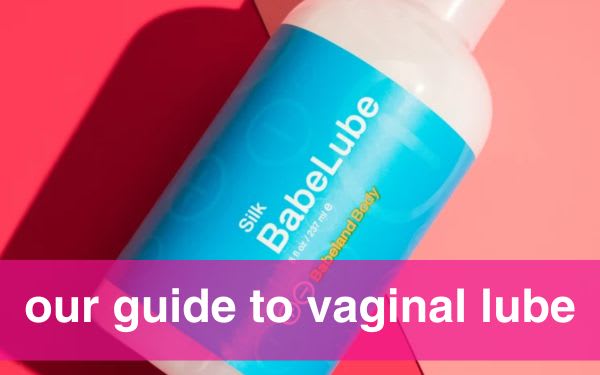Come for a Cause: Sex Education

Friends-
I’m excited to tell you about Babeland’s latest Come for a Cause partner,the Sexuality Information and Education Council of the United States (SIECUS)
SIECUS has kept sex ed in the national conversation for over fifty years! That means many of you were impacted in some way by their efforts. We’d like to ask you to “pay it forward” to the next generation, by giving Moregasm (perfect for those beginning their sexual journey) as a gift to a young person. For every Moregasm Book and Moregasm Kit we sell during 2015, we will donate 10% to SIECUS. So whether it’s a graduation present or a quiet contribution to a student’s library, consider that what you are really giving is the gift of knowledge and sexual health.
I’m passionate about this not just as a parent and an activist, but because I became a board member of SIECUS last year and I believe in their work. SIECUS is the strongest national voice in support of reality-based sex education, helping teachers and administrators create comprehensive sex ed curricula, and supporting policy-makers’ attempts to build support for sexuality education in their communities.
Knowledge is sexy! Support SIECUS and pay it forward to the next generation with a gift of Moregasm.
Peace and Pleasure,
Claire Cavanah
Why Sex Education Matters
Can you remember what it was like to be a young adult trying to learn about sex? Maybe you recall wondering how sex worked, or how to avoid getting pregnant, or just what a term like “blow job” meant. You may also remember how hard or awkward it was to get the information you needed to make good decisions (especially true for those of us who came of age before the Internet) — because your friends, your parents, and your sex ed class were just not telling you the whole story. If you received misinformation or no sex information, you probably paid a price, anywhere from public or private embarrassment to pregnancy or contracting an STD.
That’s why organizations like the Sexuality Information and Education Council of the United States (SIECUS) play such an important role in our lives: they educate teachers, youth, parents, and politicians about sexuality and reproductive health. As their mission statement explains:
SIECUS affirms that sexuality is a fundamental part of being human, one that is worthy of dignity and respect. We advocate for the right of all people to accurate information, comprehensive education about sexuality, and sexual health services. SIECUS works to create a world that ensures social justice and sexual rights.
You can also read more about SIECUS. Here’s a brief overview of several major areas of focus, excerpted from their web site:
Comprehensive Sex Education
The purpose of school-based sexuality education (aka “comprehensive sex education”) is to focus on providing kids with the foundation needed to grow into sexually healthy adults. SIECUS believes the most effective programs in grades K-12 should expand upon the sex education children receive from their families, religious communities, and healthcare professionals while respecting their values and beliefs. Ultimately, these programs should help young people foster a positive view of sexuality, give them the information and skills needed to manage their sexual health, and help them make sound decisions throughout their lives.
The federal government has used taxpayer dollars to pay for abstinence-only-until-marriage programs for over 20 years. Intended to convey that sex is morally acceptable only within the boundaries of a heterosexual marriage, these programs often replace comprehensive sex education in schools. By presenting negative views about sexuality, distorting information about STDs and condoms, and promoting biases based on gender, sexual orientation, marriage, family structure, and pregnancy, these programs only succeed in misinforming young people.
Proponents of abstinence-only programs assert that increased information about sex will lead to increased sexual activity. However, statistics have shown no causal link between abstinence programs and reduced rates of teen sex. Teens are having the same amount of sex as ever, they’re just doing it with less guidance: in 2009, 46% of high school students reported having had sexual intercourse.1 In schools where comprehensive sex education programs exist, studies have shown that they do not hasten the onset of sex, increase the frequency of sex, or increase the number of sexual partners teens have. One of the ironies of the abstinence-only approach is that according to a recent survey, over 90% of the parents of junior high and high school parents would prefer that schools provide more comprehensive sex education, not less.2
Teen Pregnancy Prevention
The United States has some of the highest teen pregnancy rates in the industrialized world -- in fact, each year almost 750,000 women ages 15–19 become pregnant.3 Teen pregnancy has a tremendous impact on the health and wellbeing of young women, their families, and their communities. A steady decline in the teen pregnancy rate from 1995-2002 was due largely to changes in sexual behavior among young people who were sexually active, including increased use of contraception and the use of more reliable methods of contraception.4 SIECUS believes that young people should have access to the information, skills, and services they need to prevent unintended pregnancy.
Sexual Orientation
Sexual orientation and gender identity make up a great part of who we are as individuals. While there seems to be a fundamental understanding that all people and personal expressions deserve respect, our country and the world, our schools still have much work to do in this regard towards lesbian, gay, bisexual, transgender, and questioning (LGBTQ) people. Are kids learning about sexual orientation in the classroom? A recent survey found that only 48% of schools taught about sexual identity and sexual orientation, compared to 86% of schools who focused on an abstinence-only message.5 SIECUS believes in the importance of providing unbiased information about sexual orientation and gender identity, viewing it as a vital step toward educating individuals and changing society.
Sexually Transmitted Diseases
In the United States 19 million people become infected with one or more STDs each year, and half of these cases occur among young people ages 12-24, yet fewer than half of adults ages 18–44 have been tested for an STD other than HIV/AIDS.6 Only 39% of schools taught teens how to put on a condom correctly as part of their sex education programs.7 There are more than 25 diseases spread primarily by sexual activity; these STDs have created a significant public health challenge. There is a clear need for young people and adults to have access to information about STDs, disease prevention methods, and testing and treatment services.
Resources for Parents,Teachers, Teens, Activists
Parents and teens, educators, healthcare professionals, and journalists all have access to publications, websites and other resources that provide current and accurate information about sexuality. Here are some helpful links:
SIECUS Information and Education
Anyone seeking information on topics relating to sexuality can begin here. This page offers everything from fact sheets to lesson plans to publications for
SIECUS’s web site for youth, with info on basic biology, STDs, HIV, contraception, gender identity, relationships, communication, sexual abuse, and decision-making.
SIECUS recognizes that the greatest step toward talking to young people about sex is acknowledging that they have significant feelings, opinions and experiences that relate directly to their sexual lives. Their site specifically geared toward teens offers several helpful links and resources:
SIECUS wrote this minibook to offer teens a starting point on understanding sexuality, including information on anatomy, sexual health, gender identity, sexual behavior, sexual abuse, STDs and HIV, and much more. The link will download a pdf.
A resource for educators who teach about sexuality with the tools they need to effectively reach young people. It includes lessons, curricula, research, and professional development opportunities.
SIECUS is a private non-profit primarily relying upon grants from foundations and donations from individuals, with cooperation from the Center for Disease Control and Prevention’s Division of Adolescent and School Health for local and state level HIV-prevention efforts. For more information visit SIECUS and any of the online resources listed. All footnote sources are from SIECUS's web site.
Footnotes
1Centers for Disease Control and Prevention (CDC); Youth Risk Behavior Surveillance Survey
2Kaiser Family Foundation, 2004
3The Guttmacher Institute
4American Journal of Public Health
5CDC’s Division of Adolescent and School Health
6SIECUS Sex Ed Library
7CDC’s Division of Adolescent and School Health











